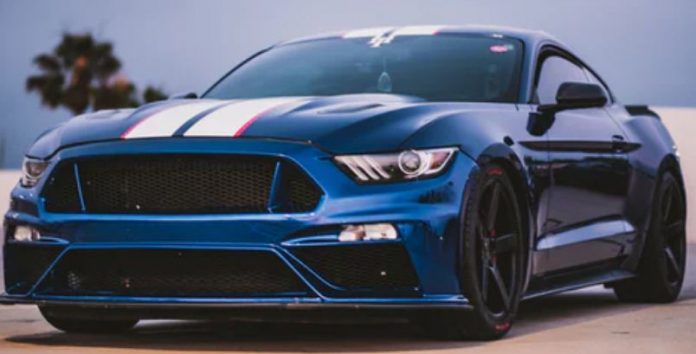Ford product manager Donald Frey introduced the Mustang in 1964, enthusiastically supported by then-general manager Lee Iacocca.
The original body style was heavily based on the Ford Falcon and Fairlane and contained a straight-6 engine, available as a coupe or a convertible.
The first model was released in early 1965 but is colloquially known as the “1964 1/2” Mustang.
In late 1965, the GT equipment package was introduced and included a V8 block engine, front fog lights, and disc brakes.
At this time a fastback version was introduced along with the coupe and convertible models, however, the coupe continued to outsell the other versions.
From 1967 to 1970, the Mustang continued to expand in size to accommodate the bigger V8 block engines, and from 1971 to 1973 New product design manager Budie Knudsen saw the Mustang through its period of largest engine size.
It was at this time the Arab Oil Embargo caused a decrease in demand in big gas-guzzlers, and Mustang fans also began to cry out for a return to the smaller Mustangs of the 1960s.
When Lee Iacocca became president of Ford in 1973, he formulated a complete redesign of the Mustang, basing it on the Ford Pinto body.
This car, known as Mustang II, was created to compete with the smaller and hot-selling sports cars of the period and went on to become of the best selling versions of the Mustang.
The V8 version was removed, but demand for it was so great Ford had to scramble for a last-minute redesign to allow a V8 engine to be fit into the car.
1979 saw another major redesign of the Mustang, based on Ford’s “Fox platform.” This era saw some of the lowest powered versions of the Mustang in its history, with the V8 rated at only 120 horsepower.
Sales slumped throughout the eighties, and another major redesign was planned for 1994.
Auto designer Patrick Schiavone designed the radical new Mustang body, codenamed “SN-95.” Sleek and stylish with rounded curves, it breathed new life into the car and is generally credited with saving it from extinction. The fastback version was also discontinued for the first time.
It was selected as the pace car for the Indy 500 in 1994 and became Motor Trend’s Car of the Year for the third time in its life.
Another redesign was approved in 1999, but kept the same basic look as the SN-95, with slightly more angular features.
The GT version increased in horsepower to 260. However, in 2005 the Mustang was given yet another round of popularity with one of the most radical redesigns in its history.
The 2005 Mustang was a complete retro redesign, with design cues taken directly from the 1960s. Ford called it “retro-futurism,” and even the interior dials and controls harkened back to the sixties.
With its a recent redesign, the Mustang remains one of the only original muscle cars in constant production and continues to be one of the most popular cars in America.

